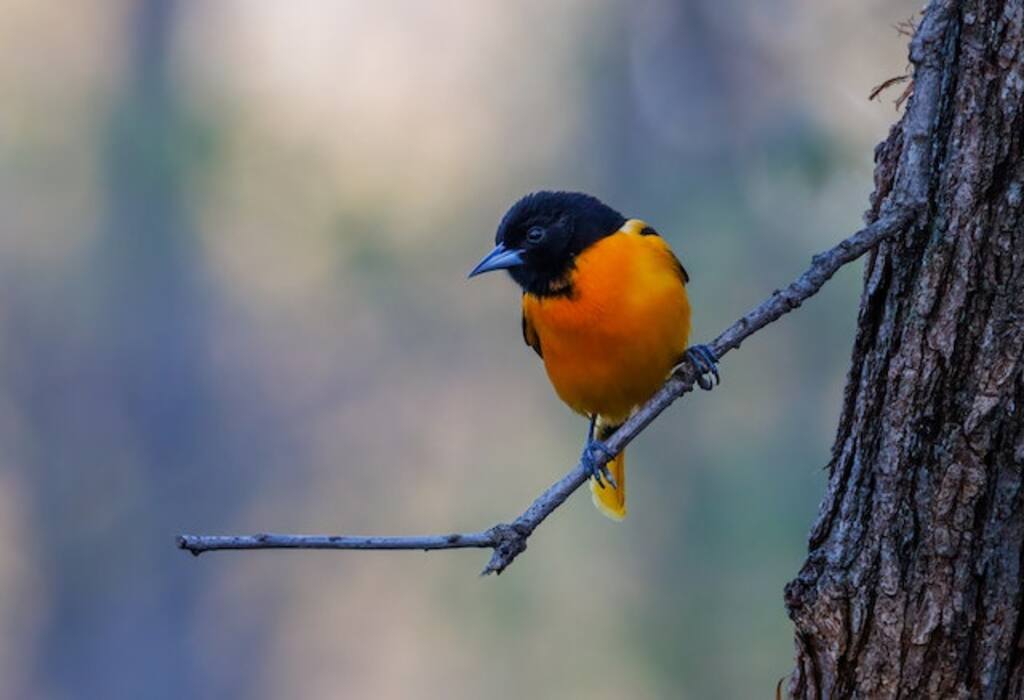Are you ready to embark on an exciting DIY journey that not only brings joy, but also invites the captivating Baltimore Orioles to your garden?
Picture this: a vibrant orange and black beauty perched on a birdhouse you crafted with your own hands. It’s like creating a cozy haven for these feathered friends and witnessing them flourish in their new abode.
In this article, we’ll unveil the secrets on how to build a bird house for Baltimore Orioles?
We’ll explore their needs, select the right materials, gather tools, cut and assemble the pieces, add those finishing touches, and strategically install the birdhouse in the perfect spot.
Get ready to dive into each step, as we guide you in constructing a functional and visually appealing birdhouse that will entice Baltimore Orioles to flock to your garden.
Let’s embark on this delightful adventure together!
Table of Contents
- 1 Why build a birdhouse for a Baltimore Oriole?
- 2 Identifying the right type of birdhouse for a Baltimore Oriole
- 3 How To Build A Bird House For Baltimore Orioles?
- 4 Gathering the materials needed to build the birdhouse
- 5 Step-by-step instructions for building the birdhouse
- 6 Choosing the right location to hang a Baltimore Oriole birdhouse
- 7 Maintaining the birdhouse to ensure the Baltimore Orioles stay safe
- 8 Tips on attracting Baltimore Orioles to the birdhouse
- 9 Suggested birdhouse designs suitable for Baltimore Orioles
- 10 Common mistakes to avoid when building a birdhouse for a Baltimore Oriole
- 11 Conclusion
- 12 FAQs: How To Build A Bird House For Baltimore Oriole?
- 12.1 What materials do I need to build a birdhouse for a Baltimore Oriole?
- 12.2 What are the recommended dimensions for a Baltimore Oriole birdhouse?
- 12.3 How do I choose the right location to hang the birdhouse?
- 12.4 When is the best time to clean and maintain the birdhouse?
- 12.5 How can I attract Baltimore Orioles to the birdhouse?
- 12.6 What are the common mistakes to avoid when building a Baltimore Oriole birdhouse?
- 12.7 How can I make the birdhouse more appealing to Baltimore Orioles?
- 12.8 Can I customize the birdhouse design for Baltimore Orioles?
- 12.9 How long does it take to build a birdhouse for Baltimore Orioles?
- 12.10 What are the benefits of building a birdhouse for Baltimore Orioles?
- 13 Author
Why build a birdhouse for a Baltimore Oriole?
If you’re looking for a fun and rewarding project, consider building a birdhouse for a Baltimore Oriole. Not only will you get to enjoy the satisfaction of creating something beautiful, but you’ll also be helping these magnificent birds.
Baltimore Orioles are a type of migratory bird that is native to the eastern United States. They are known for their striking black and orange feathers and their melodic singing.
These birds nest in trees, but they can also be attracted to birdhouses if the right environment is provided.
Building a birdhouse for a Baltimore Oriole is a great way to provide a safe and comfortable nesting spot for these beautiful birds.
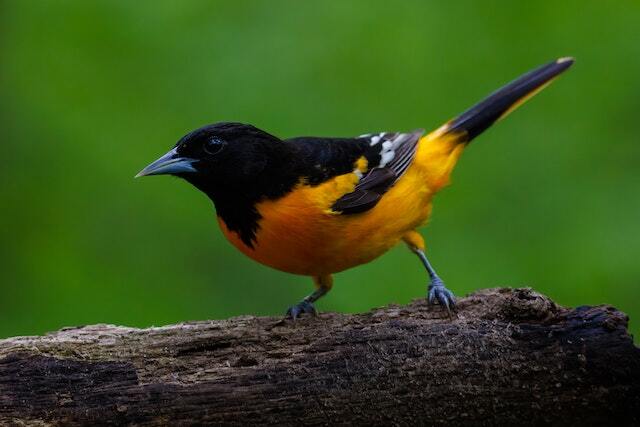
Identifying the right type of birdhouse for a Baltimore Oriole
When it comes to building a birdhouse for a Baltimore Oriole, the first step is to make sure you’re choosing the right type of birdhouse.
It’s important to identify the right type of birdhouse for a Baltimore Oriole because the size and shape of the birdhouse will affect how attractive it is to the birds.
The birdhouse should be large enough to accommodate the adult birds, but not so large that it’s too heavy or difficult to hang.
It should also be shaped in a way that makes it easy for the birds to enter and exit.
Additionally, you’ll want to make sure that the material you’re using to build the birdhouse is durable enough to withstand the elements.
How To Build A Bird House For Baltimore Orioles?
Discover the joy of attracting Baltimore Orioles to your yard by building a custom birdhouse just for them. Follow our easy-to-follow instructions below to create a welcoming haven for these beautiful songbirds.
Gathering the materials needed to build the birdhouse
Building a birdhouse for a Baltimore Oriole is a fun and rewarding project, but it takes the right materials and supplies. Before getting started, you’ll need to gather the materials needed to construct the birdhouse.
You’ll need a piece of wood, a saw, screws, nails, a drill, sandpaper, a paintbrush, and paint. If you’re feeling creative, you can also use decorative items like shells or beads to make the birdhouse look more attractive.
Make sure to get the right size of wood for your birdhouse. You would need to buy at least 1 sheet of 2×8 feet cedar wood panel to have enough material for the birdhouse, and the thickness of the wood should be at least one inch.
| Materials | Quantity |
|---|---|
| Wood (cedar or pine) | 1 piece (2 x 8 ft) 1 inch thickness |
| Nails | As needed |
| Screws | As needed |
| Drill | 1 |
| Sandpaper | 1 sheet |
| Paint | As needed |
| Wood glue | As needed |
| Saw | 1 |
| Optional perch | As desired |
| Optional decorative elements (shells, beads, etc.) | As desired |
Please ensure to adjust the quantity of nails, screws, and paint based on the size and design of the birdhouse you intend to construct.
Once you’ve gathered all the materials, you’re ready to start building your birdhouse!
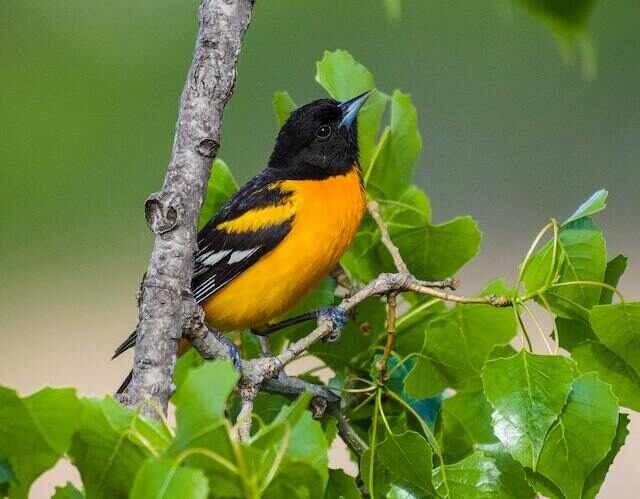
Step-by-step instructions for building the birdhouse
Building a birdhouse for a Baltimore Oriole is a great way to make your backyard more inviting for a wide variety of birds.
If you’ve ever wanted to build a birdhouse specifically for a Baltimore Oriole, then this step-by-step guide is for you!
Building a birdhouse requires some basic tools and materials, as well as some patience and care. Let’s get started!
First, you’ll need to gather the materials needed to build the birdhouse. This includes wood, nails, screws, a drill, sandpaper, paint, wood glue, and a saw.
For the wood, you’ll want to use a sturdy, weather-resistant material such as cedar or pine.
Be sure to measure and cut the pieces to the right size before you begin assembly.
Finished Size:
The finished size of the birdhouse will be approximately 10 inches in width, 10 inches in depth, and the height will depend on the design and style of the roof.
Cut Sizes:
- Side Panels:
- Cut two panels from the wood, each measuring 10 inches in width and 10 inches in height.
- Roof Panel:
- Cut one panel from the wood, measuring approximately 12 inches in width and 12 inches in depth. The extra width is to allow for an overhang.
- Floor Panel:
- Cut one panel from the wood, measuring 10 inches in width and 10 inches in depth.
| Component | Size | Quantity |
|---|---|---|
| Side Panels | 10″ (width) x 10″ (height) | 2 |
| Roof Panel | 12″ (width) x 12″ (depth) | 1 |
| Floor Panel | 10″ (width) x 10″ (depth) | 1 |
Assembly Instructions:
- Begin by assembling the sides:
- Take one side panel and apply wood glue along the edge.
- Align it with the edge of the floor panel and secure it in place using nails or screws.
- Repeat the same process with the other side panel, attaching it to the opposite edge of the floor panel.
- Ensure that the corners are aligned properly and the panels are securely attached.
- Attach the roof panel:
- Apply wood glue along the top edges of the side panels.
- Place the roof panel on top, aligning it with the sides and leaving an overhang on all sides.
- Secure the roof panel in place using nails or screws.
- Finishing touches:
- Use sandpaper to smooth out any rough edges or surfaces of the birdhouse.
- Apply paint to the exterior of the birdhouse according to your preference and let it dry completely.
- Optional additions:
- You can add a perch or decorative elements to the birdhouse if desired.
Remember to follow proper safety precautions when using tools and materials, such as wearing protective gear and using tools responsibly.
These instructions provide a general guideline for building a birdhouse for a Baltimore Oriole.
Feel free to adjust the sizes and design according to your preferences and creativity. Enjoy the process of creating a safe and attractive home for the beautiful birds!
Finally, you’ll need to hang the birdhouse in the right location.
Choosing the right location to hang a Baltimore Oriole birdhouse
Choosing the right location to hang your birdhouse is key when building a birdhouse for a Baltimore Oriole.
The ideal location should be close to trees, shrubs, and other plants that provide the birds with food and cover.
It should also be away from predators, such as cats, raccoons, and hawks. Additionally, the birdhouse should be placed in an area that is relatively sheltered from the wind.
The ideal height is between 5 and 10 feet from the ground. Taking these factors into consideration will ensure the Baltimore Orioles feel safe in their new home.
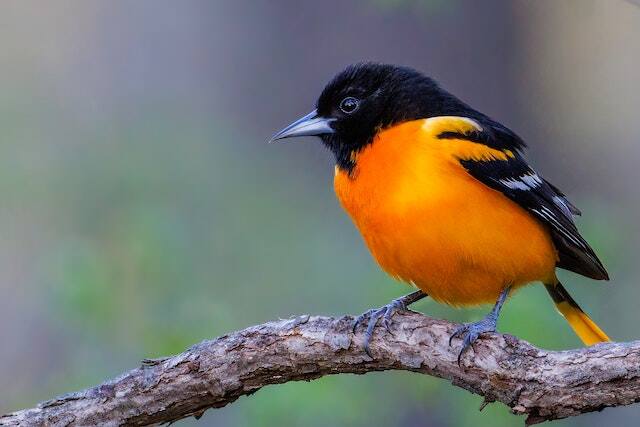
Maintaining the birdhouse to ensure the Baltimore Orioles stay safe
Maintaining the birdhouse is an important part of keeping the Baltimore Orioles safe. To keep the birdhouse in good condition, you’ll need to clean it out at least once a year.
The best time to do this is in the late winter or early spring. Make sure to remove any debris from the birdhouse, such as old nesting material, twigs, or leaves.
Additionally, you’ll want to check the birdhouse to make sure it’s still structurally sound. If you notice any damage or any parts that need to be replaced, do so as soon as possible.
As the weather changes, you may need to adjust the birdhouse to make sure it’s still comfortable for the Baltimore Orioles.
Make sure to keep the birdhouse away from predators and in a spot that gets adequate sunlight and shelter.
With a little bit of effort, you can ensure your birdhouse will be a safe and comfortable home for the Baltimore Orioles.
Tips on attracting Baltimore Orioles to the birdhouse
Attracting Baltimore Orioles to your birdhouse can be a rewarding experience. However, it’s not always easy. Here are some tips on how to draw the birds to your birdhouse:
1. Provide a safe and comfortable environment for the Orioles. This means ensuring there are no predators or other disturbances near the birdhouse. Make sure the birdhouse has plenty of perching space and is well-ventilated.
2. Place the birdhouse in an area with plenty of natural food sources. Baltimore Orioles love grubs, worms, and insects, so make sure there is plenty of these around the birdhouse.
3. Offer nesting material. Orioles will often build their nests using grass, twigs, and other materials. Place a few of these materials near the birdhouse to encourage the birds to settle in.
4. Place the birdhouse in the right location. Orioles prefer areas that are sheltered and shady. Make sure the birdhouse is not in direct sunlight and is at least six feet off the ground.
5. Make sure the birdhouse is clean. Orioles will not use a dirty or cluttered birdhouse, so make sure to clean it regularly.
By following these tips, you should have no trouble attracting Baltimore Orioles to your birdhouse.
With a little patience and a commitment to providing a safe, comfortable environment, you’ll be able to watch the birds come and go from your own backyard.
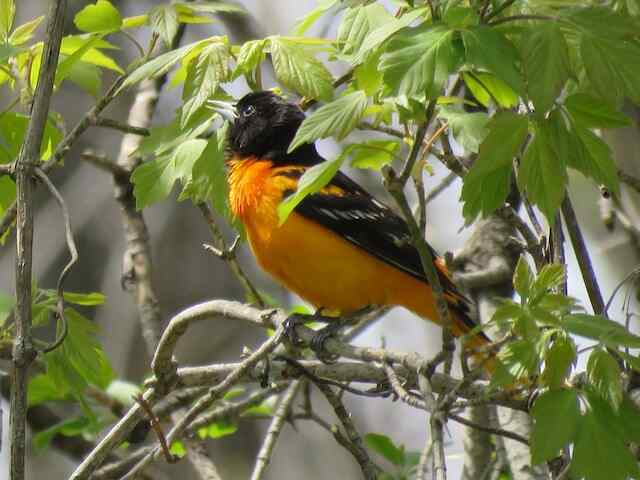
Suggested birdhouse designs suitable for Baltimore Orioles
If you’re looking for the best birdhouse design for your Baltimore Orioles, look no further!
The Baltimore Oriole typically nests in shade trees, so it’s important to provide them with a birdhouse that is suited to their needs.
Birdhouses should be designed with a wide entrance hole so that the Orioles can easily enter and exit their nest.
The birdhouse should also be made with durable materials that are weather-resistant so that the Orioles stay safe and secure.
Additionally, the birdhouse should have a sloping roof to protect the Orioles from the elements.
For added protection, you can also add a guard over the entrance hole.
Finally, the birdhouse should be hung at least 10 feet off the ground, preferably in a tree that provides plenty of shade.
With these design tips in mind, you’ll be sure to create a birdhouse that is perfect for your Baltimore Orioles.
Common mistakes to avoid when building a birdhouse for a Baltimore Oriole
Building a birdhouse for a Baltimore Oriole can be an enjoyable and rewarding project, but it’s important to avoid common mistakes.
When building a birdhouse for a Baltimore Oriole, the first mistake to avoid is not researching the right type of birdhouse for the species.
It’s essential to identify the type of birdhouse that will best suit a Baltimore Oriole before starting the project.
Another common mistake is not gathering all the necessary materials for the project beforehand.
It’s important to have all the tools and supplies that are needed to complete the birdhouse.
Additionally, it’s important to pay attention to the instructions and measurements to ensure the birdhouse is built correctly.
Lastly, when choosing a location to hang the birdhouse, it’s important to avoid areas that may be dangerous for the birds, such as high traffic areas or areas prone to predators.
By avoiding these common mistakes, you can ensure that your birdhouse project is successful and that the Baltimore Orioles will stay safe.
Conclusion
Conclusion: Building a birdhouse for a Baltimore Oriole is a fun and rewarding project that can be done by anyone, regardless of their skill level.
It’s a great way to attract these beautiful birds to your backyard and get to know them better.
With the right materials, instructions, and a bit of patience, you can build the perfect home for a Baltimore Oriole.
Plus, it’s a great way to get creative and enjoy some time outdoors. You’ll be glad you did it!
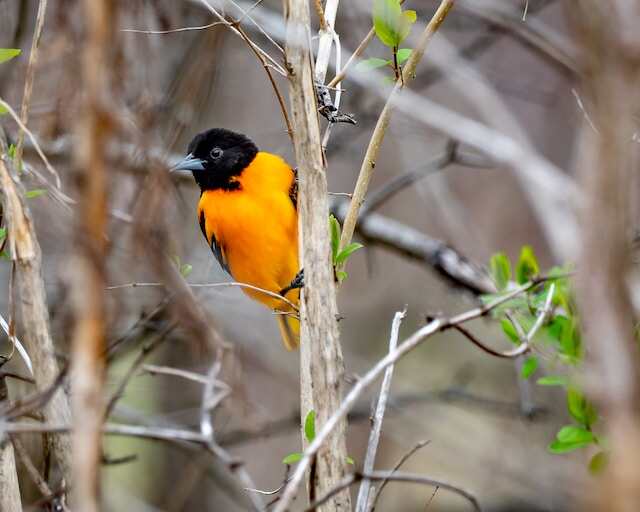
FAQs: How To Build A Bird House For Baltimore Oriole?
What materials do I need to build a birdhouse for a Baltimore Oriole?
To build a birdhouse for a Baltimore Oriole, you will need wood (such as cedar or pine), screws, nails, a saw, a drill, sandpaper, a paintbrush, and paint. Optional decorative items like shells or beads can also be used to enhance its appearance.
What are the recommended dimensions for a Baltimore Oriole birdhouse?
A suitable birdhouse for Baltimore Orioles should have a finished size of approximately 10 inches in width, 10 inches in depth, and the height will depend on the design and style of the roof. The entrance hole should be around 1.5 inches in diameter.
How do I choose the right location to hang the birdhouse?
Select a location that is close to trees, shrubs, and plants that provide food and cover. Ensure it is away from predators, such as cats, raccoons, and hawks. The birdhouse should be sheltered from the wind, ideally at a height of 5 to 10 feet from the ground.
When is the best time to clean and maintain the birdhouse?
Late winter or early spring is the ideal time to clean the birdhouse. Remove any debris like old nesting material, twigs, or leaves. Check for damage and make necessary repairs. Adjust the birdhouse as needed for changing weather conditions and ensure it receives adequate sunlight.
How can I attract Baltimore Orioles to the birdhouse?
Provide a safe and comfortable environment by ensuring no predators are nearby and offering plenty of perching space. Baltimore Orioles are attracted to grubs, worms, and insects, so create a habitat with natural food sources. Place nesting materials like grass and twigs near the birdhouse.
What are the common mistakes to avoid when building a Baltimore Oriole birdhouse?
Avoid the mistake of not researching the right type of birdhouse for Baltimore Orioles. Gather all necessary materials beforehand and follow the instructions carefully. Choose a safe location, away from high traffic areas and predators. Ensure the birdhouse is clean and well-maintained.
How can I make the birdhouse more appealing to Baltimore Orioles?
Design the birdhouse with a wide entrance hole and use durable, weather-resistant materials. Add a sloping roof for protection and consider placing a guard over the entrance hole. Hang the birdhouse in a shaded area with ample perching space.
Can I customize the birdhouse design for Baltimore Orioles?
Yes, you can personalize the birdhouse design to cater specifically to Baltimore Orioles. Incorporate their preferences, such as a wide entrance hole, durable materials, and a sloping roof. Ensuring the birdhouse is placed in a suitable location will also make it more appealing to the birds.
How long does it take to build a birdhouse for Baltimore Orioles?
The time required to build a birdhouse for Baltimore Orioles can vary depending on your skill level and available tools. Generally, it can take a few hours to gather materials, cut the panels, and assemble the birdhouse. Allow additional time for painting and any decorative touches.
What are the benefits of building a birdhouse for Baltimore Orioles?
Building a birdhouse for Baltimore Orioles not only provides a safe and comfortable nesting spot for these beautiful birds, but also allows you to observe their behaviors and enjoy their presence in your backyard. It is a rewarding and educational project that connects you with nature.

